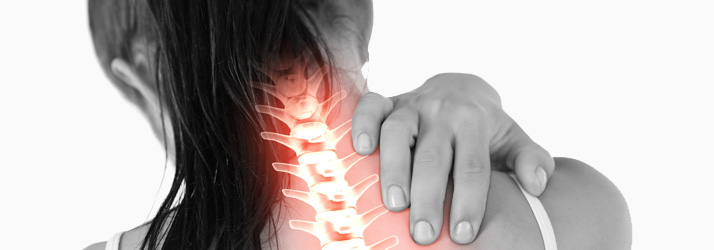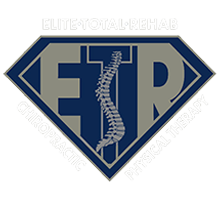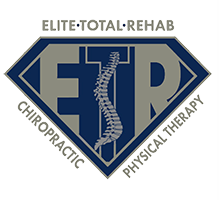Common Neck Complaints in Northwest Chicago IL

Are you suffering from neck pain in Northwest Chicago IL? Nothing is more frustrating than waking in the morning with a “crick” in your neck. Neck pain can be debilitating when left untreated. Whether you woke up with a sore neck, injured it in a motor vehicle accident, or overdid it in the weekend football game it can be bothersome and can interfere with your quality of life. It is important to isolate what is causing your pain when it started, and how it started.
Neck Pain in Northwest Chicago IL
Differentiating the type of pain is important for the clinician. There are 3 types of pain: somatic, visceral, and neuropathic. A trained clinician will evaluate your symptoms and review your history of the problem to better diagnose your ailment and give you a recommendation for treatment. A majority of the time people who present with neck pain have contracted musculature in the cervical spine which impedes the movement of the joints in the neck. This decrease in joint motion decreases the body's ability to withstand pain (pain threshold is lowered), so when pressure is applied over the area they experience an increase in pain. It is important to find a clinician/therapist who understands this adaptive human behavior to better evaluate you and give treatment recommendations.
Neck pain has also been directly related to headaches. Once the vicious cycle of muscle contraction begins in the cervical region blood supply and nerve tissue can be compromised that supply the base of the skull. Medications may help to reduce the pain but little is done to address the problem. Once a course of pain medication, non-steroidal anti-inflammatory, or even steroidal anti-inflammatory medication has run its course, joints may still be not functioning to their capability and muscle spasms may persist. Having a clinician or therapist address these issue is imperative to helping you resolve your issues.
Cervical Disc Herniations/Bulges
There are different classifications of disc pathology. The main two are herniations and bulges. Of the two, herniations are more severe and require a longer healing process. The disc itself is comprised of a nuclear material (the Nucleus pulposus) and the outer fibers (the annulus fibrosus). An easier way to explain the structure is with a popular American staple, the jelly doughnut. The inside/nucleus of the disc has a pliable/squishy substance similar to jelly. The outer portion of the disc, the annulus, has a more rigid structure like the cake in the doughnut.
In the human body, this substance is more like a grizzle from a steak. When a disc herniates, tears in the annular fibers are formed and the nucleus (jelly) passes through this structure and extends past the outermost fibers. When this herniation is severe enough it can compress the spinal nerve and cause an array of problems that can extend into the lower extremity (radiculopathy /sciatica). A disc bulge is less severe; however, since the disc is a pain-sensitive structure pain is felt. With a disc bulge tears in the outer fibers are present and the nucleus extends into the annular fibers. This causes an inflammatory response and the disc “bulges” taking on a physiological different shape.
Cervical Facet Syndrome
Facet syndrome is a condition, which involves the posterior aspects of the vertebral bodies known as the facets. The facet joints glide upon one another when the joints are moved. Irritation to these joints may come in the form of joint dysfunction, muscle tension, and osteoarthritis.
Cervical Joint Dysfunction
Joint dysfunction is a loss in joint motion. The body is designed to have certain amounts of motion at each vertebral level. For example, the cervical spine has seven bones in its region. If a loss in joint motion is found between the C3 and C4 levels the joints above and below will move more freely (hyper-mobile) to compensate for the loss of motion between the two levels. This loss is joint motion (hypomobility) if not treated may predispose the segment to advancement in arthritic changes.
Cervical Radiculopathy
Radiculopathy is pain felt in an extremity associated with nerve irritation usually due to disc pathology. Nerves can also be affected by both muscle spasms and joint dysfunction or a combination of both. When a patient experiences radiculopathy they will usually feel numbness, tingling, and or burning in the upper extremity.
If symptoms persist and it goes untreated the patient may then have developed weakness in the muscle and a slow or diminished reflex. Over time this can become a serious problem and should be evaluated immediately and taken seriously. Nervous tissue once compromised has a slow recovery rate when compared to other soft tissue in the cervical spine with no chance of recovering to its initial state.
Cervical Spinal Stenosis
Spinal stenosis involves encroachment upon the spinal cord. Disorders that have been known to cause this condition: Disc herniations/bulges, advanced osteoarthritis, and spinal cord masses/tumors. Spinal stenosis when left untreated can cause severe disorders to the upper extremities (radiculopathy) and symptoms distal or below the encroachment.
Cervical Spine Arthritis
Arthritis is a common variable as we age. With that said there are ways to prevent arthritic advancement and promote a healthy spine. The body needs the motion to function properly. Undetected joint dysfunction (see joint dysfunction) causes instability in relation to the joint above and below. Allowing a joint to move in its “designed” motion gives the body a chance to advance its “aging” process in a more uniform/symmetrical stage rather than severe advancement at one or two levels.
Cervical Sprain/Strain
A Cervical sprain/strain involves the joint, tendon, ligament, and muscles of the cervical spine. This condition can come in an array of mechanisms, such as repetitive use, over-exertion with certain exercises/movements, motor vehicle accidents (Whiplash), and even from an insidious onset such as “I woke up and my neck hurt”.
Headaches/Migraines
We have all had headaches in the past. Headaches that reoccur or become a daily nuisance should be evaluated thoroughly. Organic headaches (brain tumor, a brain aneurysm, hematoma, meningitis, brain abscess, brain infection, cerebral hemorrhage, or encephalitis) need to be ruled out first and foremost, these conditions can be fatal when left untreated. Headaches can also stem from a neuromusculoskeletal disorder. Cervical segments in the upper spine can have an impact on the base of the skull leading to headaches. Increased muscle tonicity in the sub-occipital and posterior cervical musculature can impinge on the vertebral artery and the sub-occipital nerve, which supplies nutrients and innervates the base of the skull, top of the head, and over the ear. Once organic headaches have been ruled out treatment with manual therapy has been shown to be effective in treating tension/migraine headaches.
Scoliosis of the Neck
Scoliosis is an abnormal curvature of the spine. There are several types of scoliosis: idiopathic, congenital, neuromuscular, and degenerative. Scoliosis most commonly affects the thoracic and thoracolumbar spine. Residual curves may be present in the cervical spine; the body prefers to have the visual apparatus (the eyes) horizontal to the viewing field. An upper thoracic curve or a curve that is severe enough may affect the lower cervical spine, in that respect, the upper cervical spine will compensate to keep the head level and the eyes at a horizontal viewing field.
Spasm of Cervical Spinal Muscles
Muscles in the cervical spine become tight and people often refer to them as “knots”. These knots are actually called “trigger points”. Trigger points usually follow a pattern and can be very painful in their active state. Muscles that can be affected in this region include:
- Posterior cervical muscle.
- Sub-occipital muscle.
- Upper trapezium muscle.
- Scalene Muscles.
- Sternocleidomastoid Muscle.
- Levator Scapulae Muscle.
- Rhomboid Muscle.
Monday
9:00am - 6:00pm
Tuesday
9:00am - 6:00pm
Wednesday
9:00am - 6:00pm
Thursday
9:00am - 6:00pm
Friday
9:00am - 6:00pm
Saturday
By Appointment
Sunday
Closed
Elite Total Rehab
7008 W Higgins Ave
Chicago, IL 60656



